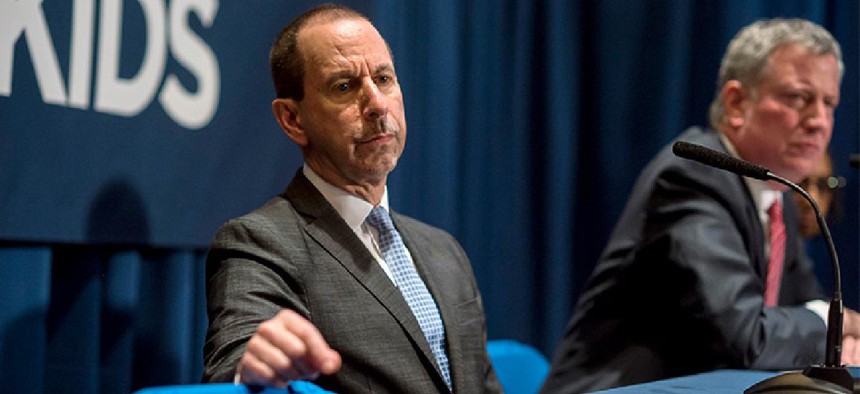ACS braces for next phase of Raise the Age

ACS Commissioner David Hansell Ed Reed/Mayoral Photography Office
As the second phase of Raise the Age begins implementation next month, bringing 17-year-olds out of the adult court system and into the juvenile justice system, challenges remain. But the New York City Administration for Children’s Services won’t find the adjustment to be as difficult as last year, said ACS Commissioner David Hansell.
One of the agency’s main obstacles was incorporating the influx of both 16- and 17-year-olds who were released from Rikers Island during the first phase in 2018, Hansell said at a policy briefing hosted by the Association for a Better New York. ACS currently houses youth with cases pending in family or criminal court as well as those who have been convicted. This next step will be more “incremental,” he said, absorbing juveniles into the system as they are arrested.
Predicting how many 17-year-olds will join the system can be difficult. But the program’s first phase has shown a decline in arrests for both 16- and 17-year-olds across the state.
“As we were planning for the first phase of Raise the Age, we thought about the kinds of services that older youth would need – educational services, vocational services, things like that,” Hansell said. “Obviously, that will probably be even more pronounced with 17-year-olds.”
ACS’s Close to Home program – which predates Raise the Age and houses juveniles affected by the law – has also seen declines in youth placements. Only 14% of juveniles were readmitted to the program’s facilities from 2014 to 2016. In contrast, one prison in Wisconsin – which is now trying to emulate New York City’s model – had a 58.8% recidivism rate for youth within a three-year period.
As far as what challenges next week will bring, some fear the influx of juveniles will bring more prolonged delays between arrests and arraignments. Court-appointed attorneys have also called for pay raises in light of the law, which will only add to their caseloads.
